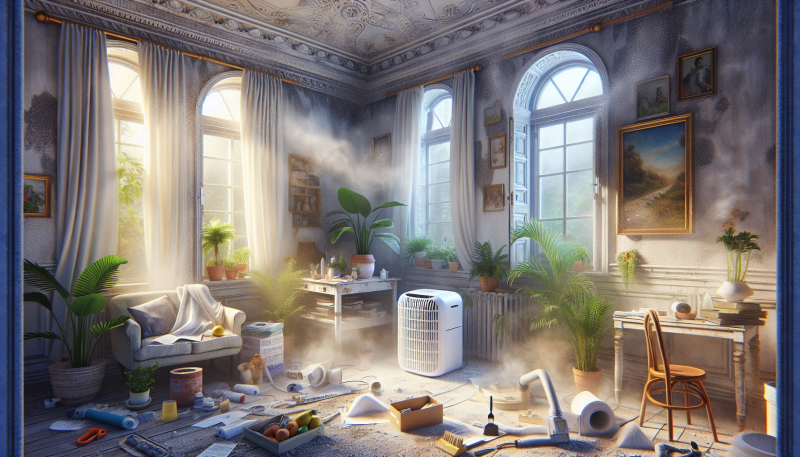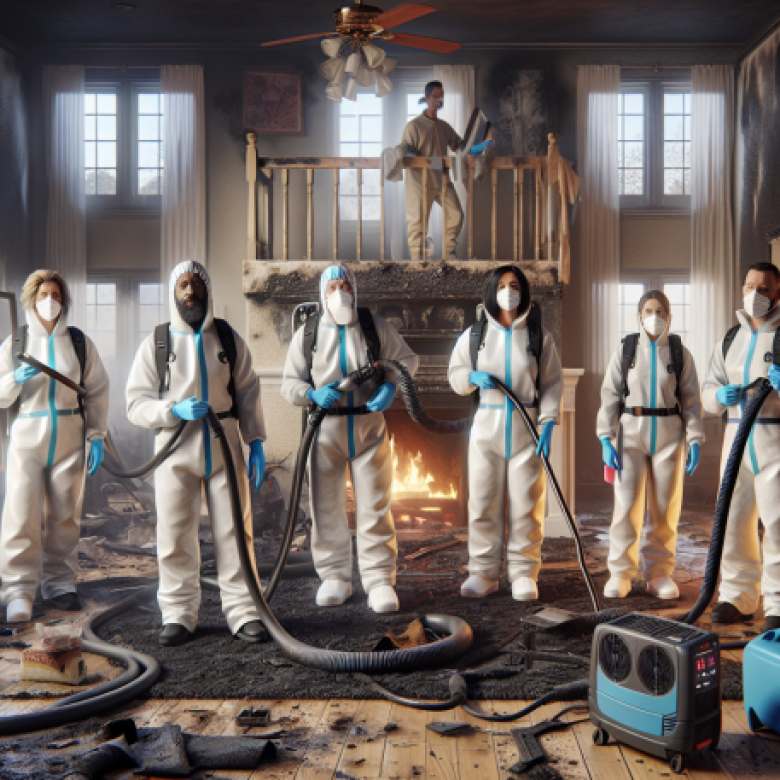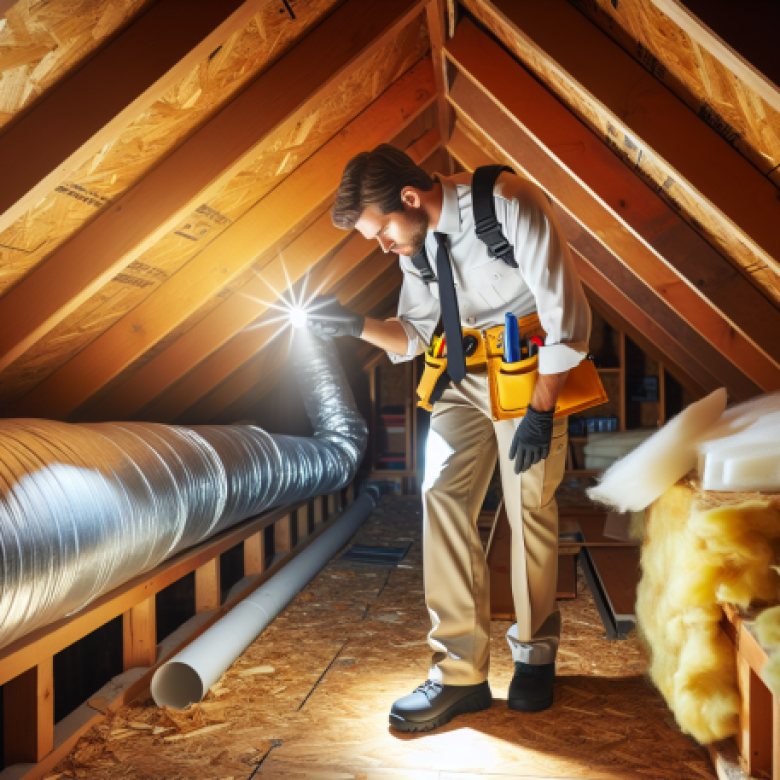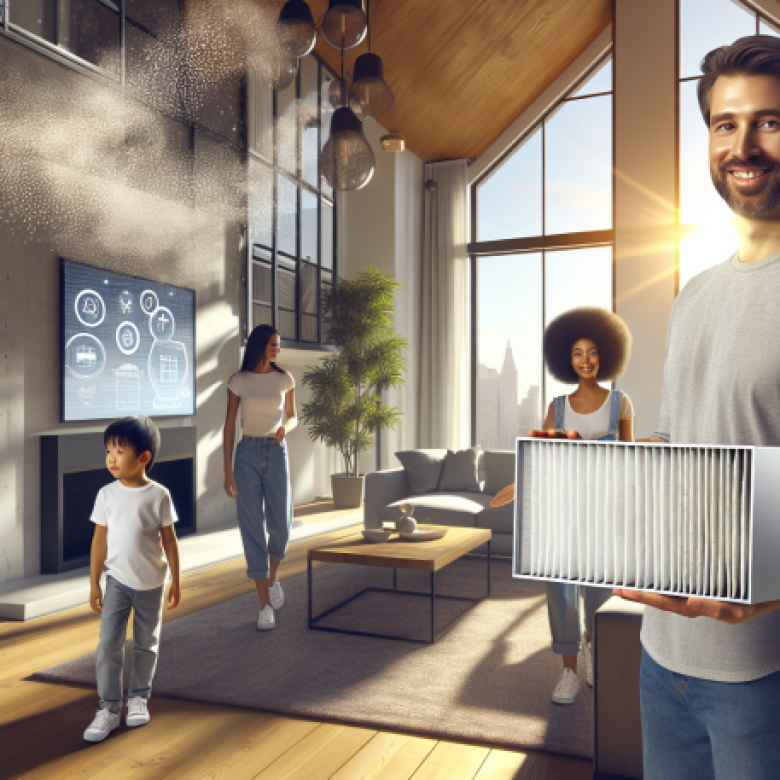Maintaining indoor air quality during restoration is crucial for ensuring a safe and healthy environment, especially when dealing with water damage, mold, or fire incidents. At Projekt Property Restoration, we understand the importance of clean air in your home or business. With over 16 years of experience in commercial and residential property restoration, our fully licensed and insured company is dedicated to providing top-notch services to our clients. Located at 20533 Biscayne Blvd Suite #1231, Aventura, FL 33180, we are available 24/7 to address your restoration needs. You can reach us at 1-855-933-7935 or via email at Claims@ProjektFL.com.
Our comprehensive restoration services include water damage restoration, mold assessment and remediation, fire damage restoration, biohazard cleanup, and more. We use state-of-the-art equipment and techniques to ensure that your property is restored to its pre-loss condition while maintaining optimal indoor air quality. Our team of highly trained experts works diligently to provide prompt and professional service, all at competitive prices. We also assist with direct insurance billing, making the restoration process as seamless as possible for you.
Maintaining indoor air quality during restoration is not just about removing visible damage; it’s about ensuring that the air you breathe is free from contaminants. This is why we prioritize air quality in every project we undertake. Whether it’s through dehumidification, infrared thermal imaging, or thorough mold remediation, our goal is to create a safe and healthy environment for you and your loved ones.
Don’t just take our word for it—our satisfied customers, like Sandy C. from Weston, FL, and Kathryn R. from Hollywood, FL, can attest to our clean, fast, and thorough service. For more information or to request a free quote, visit our website or contact us today. Stay connected with us on Facebook, Instagram, Twitter, and Google to stay updated on our latest projects and news. At Projekt Property Restoration, we are committed to restoring your property and providing you with peace of mind.
Effective Ventilation Strategies
Effective ventilation strategies are crucial for maintaining indoor air quality during restoration projects. Proper ventilation helps to control the concentration of airborne contaminants, reduce moisture levels, and ensure a healthy indoor environment. This is especially important during restoration activities, which can release dust, mold spores, and other pollutants into the air. Here are some effective strategies to consider:
First and foremost, understanding the importance of ventilation in restoration projects is essential. According to the Environmental Protection Agency (EPA), "ventilation is one of the most important factors in maintaining good indoor air quality." Proper ventilation can help to dilute and remove contaminants from the indoor environment, making it safer for occupants and workers.
One of the most effective strategies is to use mechanical ventilation systems. These systems can be designed to provide a continuous supply of fresh air while exhausting stale air from the building. Mechanical ventilation can be particularly useful in areas where natural ventilation is limited, such as basements or enclosed spaces. For example, using an exhaust fan in a basement during a mold remediation project can help to remove mold spores and prevent them from spreading to other areas of the building.
Another important strategy is to use air filtration systems. High-efficiency particulate air (HEPA) filters can capture a wide range of airborne contaminants, including dust, mold spores, and bacteria. Using HEPA filters in conjunction with mechanical ventilation systems can significantly improve indoor air quality during restoration projects. According to the American Society of Heating, Refrigerating, and Air-Conditioning Engineers (ASHRAE), "HEPA filters are capable of removing at least 99.97% of airborne particles as small as 0.3 microns."
Natural ventilation can also be an effective strategy, especially in mild weather conditions. Opening windows and doors can help to increase the flow of fresh air into the building and reduce the concentration of indoor pollutants. However, it is important to consider the outdoor air quality when using natural ventilation. For instance, if the outdoor air is polluted or contains high levels of allergens, it may not be suitable for ventilation purposes.
In addition to mechanical and natural ventilation, it is important to control the sources of indoor pollutants. This can be achieved by using low-emission materials and products during restoration activities. For example, choosing low-VOC (volatile organic compounds) paints and adhesives can help to reduce the release of harmful chemicals into the air. Additionally, proper storage and handling of chemicals and materials can prevent accidental spills and emissions.
Monitoring indoor air quality is another crucial aspect of effective ventilation strategies. Using air quality monitors can help to detect elevated levels of pollutants and identify areas that require additional ventilation. For example, carbon dioxide (CO2) monitors can be used to assess the effectiveness of ventilation systems and ensure that adequate fresh air is being supplied to the building.
Implementing a comprehensive ventilation plan is essential for successful restoration projects. This plan should include detailed procedures for ventilating different areas of the building, as well as guidelines for maintaining and operating ventilation equipment. Regular maintenance of ventilation systems is also important to ensure their continued effectiveness. This includes cleaning and replacing filters, inspecting ductwork, and checking for any blockages or leaks.
In conclusion, effective ventilation strategies are vital for maintaining indoor air quality during restoration projects. By using a combination of mechanical and natural ventilation, air filtration systems, and source control measures, it is possible to create a healthier indoor environment. Monitoring and maintaining ventilation systems are also key to ensuring their effectiveness. For more information on maintaining indoor air quality during restoration, visit Projekt Restoration or explore their resources.
References:
- Environmental Protection Agency (EPA). “Ventilation and Air Quality in Offices.” Retrieved from https://www.epa.gov/indoor-air-quality-iaq/ventilation-and-air-quality-offices
- American Society of Heating, Refrigerating, and Air-Conditioning Engineers (ASHRAE). “ASHRAE Position Document on Filtration and Air Cleaning.” Retrieved from https://www.ashrae.org/file%20library/about/position%20documents/filtration-and-air-cleaning-pd.pdf
- Centers for Disease Control and Prevention (CDC). “Guidelines for Environmental Infection Control in Health-Care Facilities.” Retrieved from https://www.cdc.gov/infectioncontrol/guidelines/environmental/index.html
"Ventilation is one of the most important factors in maintaining good indoor air quality." – Environmental Protection Agency (EPA)
"HEPA filters are capable of removing at least 99.97% of airborne particles as small as 0.3 microns." – American Society of Heating, Refrigerating, and Air-Conditioning Engineers (ASHRAE)
Choosing the Right Air Purification Systems
When it comes to maintaining indoor air quality during restoration, choosing the right air purification systems is crucial. The restoration process often involves the release of dust, mold spores, and other contaminants into the air, which can pose significant health risks. Therefore, selecting an effective air purification system is essential to ensure a safe and healthy environment.
First and foremost, it is important to understand the different types of air purification systems available. High-Efficiency Particulate Air (HEPA) filters are among the most effective options. These filters can capture particles as small as 0.3 microns, including dust, mold spores, and other allergens. HEPA filters are particularly useful in restoration projects where mold removal is necessary. For instance, if you are dealing with mold issues, you might want to consider professional services like Cooper City mold removal to ensure thorough cleaning and air purification.
Another option to consider is activated carbon filters. These filters are excellent at removing odors and volatile organic compounds (VOCs) from the air. VOCs are often released during restoration activities, especially when dealing with fire damage or chemical spills. Activated carbon filters can help neutralize these harmful substances, making the air safer to breathe. If you are dealing with fire damage, you might find services like fire damage restoration in Pembroke Pines beneficial for comprehensive air quality management.
Ultraviolet (UV) air purifiers are another effective solution. These systems use UV light to kill bacteria, viruses, and mold spores, providing an additional layer of protection. UV air purifiers are particularly useful in environments where biohazard cleanup is required. For example, if you are dealing with a biohazard situation, you might want to look into specialized services like biohazard clean-up to ensure that all harmful pathogens are effectively eliminated.
When selecting an air purification system, it is also important to consider the size of the area that needs to be purified. Larger spaces will require more powerful systems with higher air exchange rates. Additionally, the duration of the restoration project should be taken into account. Some air purifiers are designed for continuous operation, while others are more suitable for short-term use.
In conclusion, choosing the right air purification system is a critical step in maintaining indoor air quality during restoration. Whether you are dealing with mold, fire damage, or biohazard situations, there are various options available to meet your specific needs. By understanding the different types of air purifiers and their applications, you can ensure a safer and healthier environment throughout the restoration process.
In conclusion, maintaining indoor air quality during restoration projects is not just a matter of comfort, but a critical aspect of ensuring the health and well-being of everyone involved. By implementing proactive measures such as using proper ventilation, employing air purifiers, sealing off work areas, and regularly monitoring air quality, you can significantly reduce the risk of airborne contaminants. Additionally, choosing low-VOC materials and ensuring thorough cleaning post-restoration can further enhance the indoor environment. Prioritizing these steps will not only safeguard the health of occupants but also contribute to a more efficient and successful restoration process. Remember, a clean and healthy indoor atmosphere is the foundation of a safe and habitable space.





